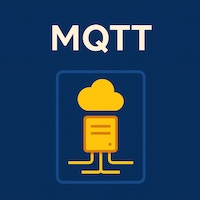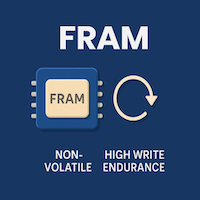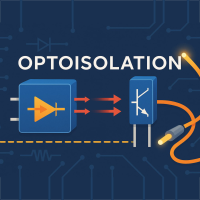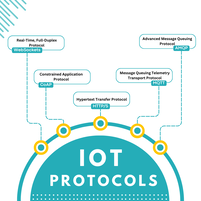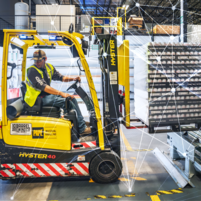What are the technologies used in IoT?

Although connectivity is the core of the Internet of Things (IoT), you won't be able to find a communication solution that works in precisely the same manner for every case since the IoT is so diverse and complex. Following our last essay on mesh and star topologies, we'll go through the six most common wireless Internet of Things technologies in this one.
Each IoT solution offers a unique mix of benefits and limitations best suited for a particular set of IoT use cases.
IoT Wireless Technologies
1. LPWANs
As the Internet of Things continues to grow, so does the use of low-power wide-area networks or LPWANs. Large-scale Internet of Things networks that span industrial and commercial campuses may benefit from this family of technologies. They provide long-range communication on small, inexpensive, and long-lasting batteries.
LPWANs can connect all types of IoT sensors, allowing for a broad range of applications. Asset tracking, environmental monitoring, facility management, occupancy detection, and consumables monitoring are all included in these programs. Because they can only transmit small blocks of data at a prolonged rate, LPWANs are better suited for use cases that do not need massive bandwidth or urgency.
It's also worth noting that not all LPWANs are created equal. NB-IoT, LTE-M, and other licenced and unlicenced (e.g. LoRa, MY THINGS, Sigfox, etc.) technologies are now operating in the spectrum with varying degrees of performance in critical network parts. They include technology such as Unlicensed LPWANs. On the other hand, must prioritize Quality-of-Service and scalability above power consumption when deploying cellular-based, licenced LPWAN solutions. You should also look at standardization to ensure your system's long-term stability, security, and compatibility.
2. Cellular (3G/4G/5G)
When it comes to audio and video streaming, cellular networks are an excellent choice since they offer a consistent internet connection. They are well-known in the world of consumer mobile phones. In addition, they need a lot of power and require a lot of upkeep.
For certain use cases, such as fleet management in the transportation and logistics sector or connected vehicles, cellular networks are a suitable fit, even if they are not viable for the overwhelming majority of Internet of Things applications powered by the sensor networks battery-operated. A high-bandwidth cellular connection may be required for many applications, such as in-car entertainment, traffic routing, and advanced driver assistance systems (ADAS).
In the not-too-distant future, cellular next-generation 5G networks will be primarily relied upon by autonomous vehicles and augmented reality. These networks will support high-speed mobility and low latency. The arrival of 5G is expected to make various time-sensitive applications for industrial automation, such as real-time video monitoring for public safety and real-time mobile dissemination of medical data sets, conceivable shortly.
3. Zigbee and Mesh Protocols
Zigbee has a limited range, and it consumes very little electricity. Sensor data is sent through many sensor nodes in mesh architecture to increase coverage. Because of its mesh topology, Zigbee uses much more power than LPWAN, which has more excellent data rates.
The small physical range of Zigbee and other mesh protocols, such as Z-Wave and Thread, makes them excellent for medium-range Internet of Things (IoT) applications (less than 100 metres). These protocols work best when nodes are evenly distributed across the network. HVAC controls, Smart lighting, security and energy management are just a few of the numerous applications where Zigbee and Wi-Fi work well together. Home sensor networks are used in these examples, as well.
Before LPWAN, mesh networks were also utilised in industrial settings to enable various remote monitoring options, such as temperature and humidity sensors. However, the majority of geographically spread industrial locations are unsuitable for these systems, and the more sophisticated network construction and management often impede the potential scalability of these systems.
4. Bluetooth and BLE
A short-range communication technology, Bluetooth, has found its place in the consumer sector. As a wireless personal area network, Bluetooth falls under this category. The original goal of Bluetooth Classic was to facilitate point-to-point or point-to-multipoint data exchange between consumer devices (with up to seven slave nodes). Bluetooth Low-Energy, which is optimised for power consumption, was created for the Consumer Internet of Things.
BLE-enabled devices are typically used in conjunction with other electronic devices, such as smartphones to transfer data to the cloud. Using a smartphone as a hub, data may be sent and received. Fitness and medical wearables (such as glucose metres and smartwatches) and Smart Home devices (such as door locks) now use BLE, which simply allows data to be transferred and viewed on smartphones. Smart Home devices such as door locks now use BLE.
Bluetooth Mesh is expected to be introduced in 2017 to make BLE devices more widely available in retail environments, such as supermarkets. New service developments, such as in-store navigation, targeted marketing, and content delivery, have been made possible by BLE beacon networks, which provide flexible indoor localization capabilities.
5. Wi-Fi
Given how important Wi-Fi is in ensuring high-throughput data transmission in both business and residential settings, there is almost no need to explain the technology. However, because of its substantial limits in coverage, scalability, and power consumption, the technology is not nearly as widespread in the Internet of Things (IoT) field.
Wi-Fi is not always a workable choice for large networks of battery-powered Internet of Things sensors since it has significant energy needs. This is particularly true in the industrial Internet of Things and smart building situations. Instead, it more pertains to connecting devices that can be conveniently connected to a power outlet like smart appliances, home gadgets, security cameras or digital signages.
The most recent iteration of Wi-Fi, known as Wi-Fi 6, provides significantly increased network capacity (i.e. 9.6 Gbps), which increases the amount of data that can be sent to each user in crowded surroundings. As a result, public Wi-Fi infrastructure will be upgraded, and new digital mobile services will be introduced in the retail and leisure sectors. In-vehicle networks for entertainment and onboard diagnostics are also anticipated to be the use case for Wi-Fi 6 that will have the most impact on the industry. Yet, the development will likely take some more time.
6. RFID
Radio Frequency Identification (RFID) may send small amounts of data across short distances using radio waves. Technology has recently allowed a significant shift in retail and logistical operations.
RFID tags may be attached to a wide variety of objects and equipment, enabling organisations to keep track of their inventory and assets in real-time, resulting in better stock and production planning and a more efficient supply chain. RFID is well entrenched in the retail business, enabling new IoT applications such as self-checkout, smart shelves, and smart mirrors to emerge with the growing use of IoT.
Explore more
Need any help in IoT?
Need any help in IoT? An Atreyo expert identify the right solution for your needs.
If ready to talk to an Atreyo expert
Interested in IoT products? go to
